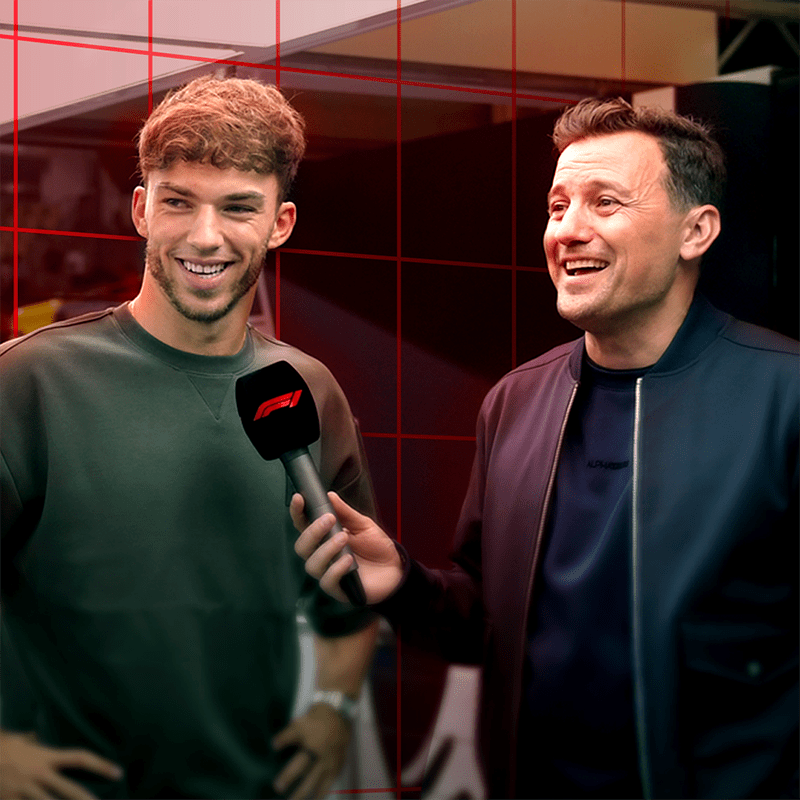Feature F1 Unlocked
THE STRATEGIST: Hamilton and Bottas risked a ‘reverse strategy’ at Monza – so how did they make it work?

The Italian Grand Prix at Monza is historically a one-stop race and despite Pirelli introducing softer tyre compounds than last year, a one-stop strategy running the medium and then hard tyres still remained the strong preference among the teams on Sunday.
Seven drivers at the back of the field ended up aborting onto two-stop strategies. Two other drivers remained on the one-stop strategy, but stand out as bucking the medium start tyre trend – and making it work. Former Aston Martin strategist Bernie Collins explains how they did it…
Lewis Hamilton from P8 and Valtteri Bottas from P14 both started on the hard tyre. Hamilton managed to gain two positions to finish P6 and Bottas three positions (four if we count the fact that Yuki Tsunoda was unable to take the start) to finish in the final point scoring position of P10.
Starting on the hard tyre comes with a number of risks – which is why the teams try to avoid doing it. It will have the poorest launch performance and warm-up, increasing the risk of an incident or losing positions in the opening laps.
Hamilton actually commented on the grid, “Let’s hope this tyre is not too slow,” and then lost a position to Lando Norris early on in the race which resulted in him running the first stint in P9 in the DRS train of both McLarens.
Bottas meanwhile lost a position to Logan Sargeant and remained behind in the DRS train until those ahead stopped. So given those issues and risks, how did the 'hard start tyre' strategy pay off?

The chart below shows free air races with no influence from traffic or car pace. It simply shows the difference in race time through tyre selection and stop lap. The chart would show a flat horizontal line if a driver completed the same lap time every lap. Moving upwards shows a lap faster than this average lap and the sharp fall downwards represents a pit stop.
This shows that in the ideal model the medium start tyre (blue) would be faster in the first stint but force an earlier stop. However starting on the hard tyre (red) would result in a faster final stint, and result in the same overall race time.
These optimum strategies are an extremely useful tool but can oversimplify the situation. During the race, in order for the one-stop strategy to be possible, an amount of tyre management was required in order to control tyre degradation.
This management is generally more important on the softer tyres and most needed at higher fuel (when the car is at its heaviest). Therefore at the start of the race on high fuel, the medium tyre needed more management to survive compared to the hard.

This allowed both Hamilton and Bottas on the hard tyre to match the lap time of cars around them on the medium tyre, as both drivers were required to do less tyre management.
Therefore, aside from the start performance, neither Hamilton nor Bottas’s lap times suffered in the opening stint relative to those on the medium tyre. In the chart above, this meant the blue and red lines actually matched each other in the opening stint.
F1 NATION: Another Max masterclass but Ferrari impress on home soil – it's our Italian GP review
In the final stint, however, with significantly lower fuel loads, some track improvement and slightly lower track temperature, less tyre management was needed. This allowed both Hamilton and Bottas to use the faster medium tyre to its full advantage.
Ideally for both drivers, the pit stop to change from hards to mediums would have been delayed in order to maximise the lap time difference to others in the final stint. However in both cases traffic forced an earlier pit stop than either would have done otherwise.
.png.transform/9col/image.png)
The chart above is the same format as the free air traces but shows the actual lap times set by the top 10 finishing drivers and the effects of traffic and overtaking.
In the race trace above you can see that Hamilton is forced to pit before interacting with Carlos Sainz, Charles Leclerc and Sergio Perez. Each of these drivers with the speed to overtake would have resulted in Hamilton losing some time defending.
HIGHLIGHTS: Watch the action from Monza as Verstappen seals a record-breaking win
Equally, Bottas pits before being undercut by Lance Stroll (not shown) and before interacting with Alex Albon and Norris. After losing position to George Russell, Bottas told the pit wall to allow a one-second time loss for every overtake. Teams work hard in order to minimise the time lost through overtakes or blue flag events.
These interactions with other drivers, and the time lost as a result, are often key to making the hard start tyre strategy work. It takes careful calculation of not only your own driver’s pace but also the entire field to be sure it is the correct thing to do – or at least worth the risk. On Sunday, both Mercedes and Alfa Romeo managed to get the calculations correct – and make it work to their advantage.

Bottas credits Alfa Romeo for ‘nailing the strategy’ as he grabs final point in Italy




















